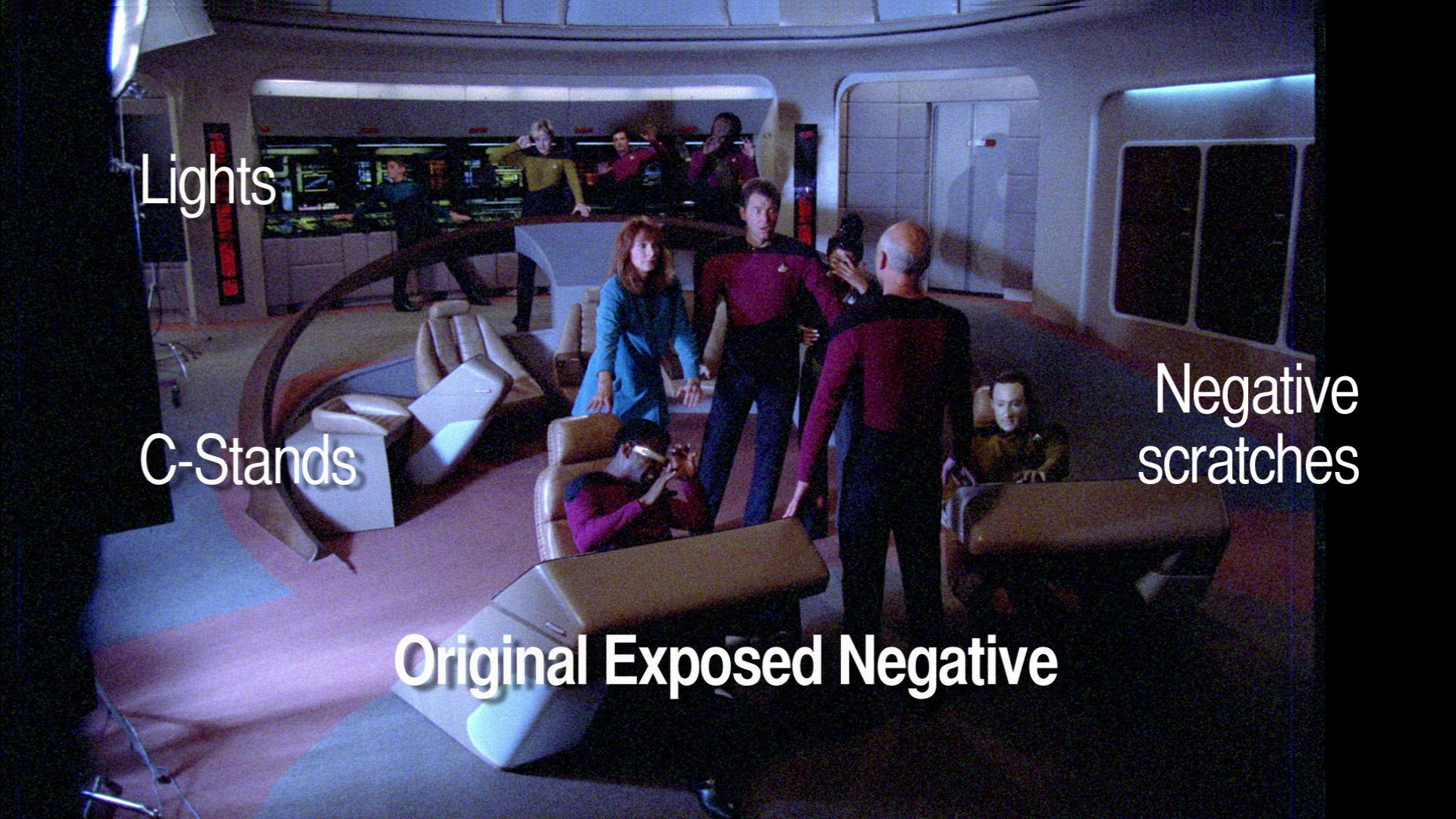After the DS9: Redefined DVD upscale was nearly completed, the LaserDiscs of the first three seasons of Deep Space Nine and first four of Voyager were surprisingly discovered to have better video quality than their DVD (or digital) releases due to poor composite to component conversion. (Both shows' later seasons look better on DVD because production switched to component editing and DVD is a component format, whereas LaserDisc is composite.) So, these early seasons are now being redone from the ground up using digitized LaserDisc data captured directly from the RF signal via a Domesday Duplicator, which—along with combining the data from RF captures of multiple physical copies of each disc—ensures the highest quality unaltered presentation of Deep Space Nine and Voyager currently available to the public. These files will then be upscaled to high definition through a combination of artificial intelligence and extensive manual tweaking. "Emissary" and "Caretaker" are complete, with work underway to capture and upscale all 166 episodes (72 DS9 and 94 VOY) which look better on LaserDisc.
The American LaserDiscs used a better source than the Japanese LaserDiscs, but more episodes were released in Japan than America, so the ultimate upscale sources are American LaserDiscs for the first two-and-a-half seasons (through 3x14 - "Heart of Stone," plus 3x26 - "Adversary" from The Captains Collection), Japanese LaserDiscs for the last half of the third season (from 3x15 - "Destiny" through 3x25 - "Facets"), and American DVDs for the last four seasons of Deep Space Nine, and for Voyager, the American LaserDisc of "Caretaker," Japanese LaserDiscs for the rest of the first four seasons, and American DVDs for the last three seasons. Occasional hardcoded subtitles on the Japanese discs will be masked out with DVD information. (All PAL LD and DVD releases look and sound worse due to lossy conversion from NTSC to PAL.)
There's also a small side project to replace with superior LaserDisc upscales the few brief scenes badly upscaled from tape in a few episodes of the Next Generation remaster.
While nowhere near the quality that only a 35mm negative rescan could bring (as was done for the movies, The Original Series, The Next Generation, and twenty minutes of scenes from across all seven seasons of Deep Space Nine for the retrospective documentary What We Left Behind), this is the absolute best these two shows can look without an official remaster or future advances in upscaling technology.
The American LaserDiscs used a better source than the Japanese LaserDiscs, but more episodes were released in Japan than America, so the ultimate upscale sources are American LaserDiscs for the first two-and-a-half seasons (through 3x14 - "Heart of Stone," plus 3x26 - "Adversary" from The Captains Collection), Japanese LaserDiscs for the last half of the third season (from 3x15 - "Destiny" through 3x25 - "Facets"), and American DVDs for the last four seasons of Deep Space Nine, and for Voyager, the American LaserDisc of "Caretaker," Japanese LaserDiscs for the rest of the first four seasons, and American DVDs for the last three seasons. Occasional hardcoded subtitles on the Japanese discs will be masked out with DVD information. (All PAL LD and DVD releases look and sound worse due to lossy conversion from NTSC to PAL.)
There's also a small side project to replace with superior LaserDisc upscales the few brief scenes badly upscaled from tape in a few episodes of the Next Generation remaster.
While nowhere near the quality that only a 35mm negative rescan could bring (as was done for the movies, The Original Series, The Next Generation, and twenty minutes of scenes from across all seven seasons of Deep Space Nine for the retrospective documentary What We Left Behind), this is the absolute best these two shows can look without an official remaster or future advances in upscaling technology.
Last edited:


 But that aside, there are moments of absolute wonder despite the telltale moments. (But Picard's cat toy laser stilllacks definition and the opening theme looks fairly waxy as well...)
But that aside, there are moments of absolute wonder despite the telltale moments. (But Picard's cat toy laser stilllacks definition and the opening theme looks fairly waxy as well...)
